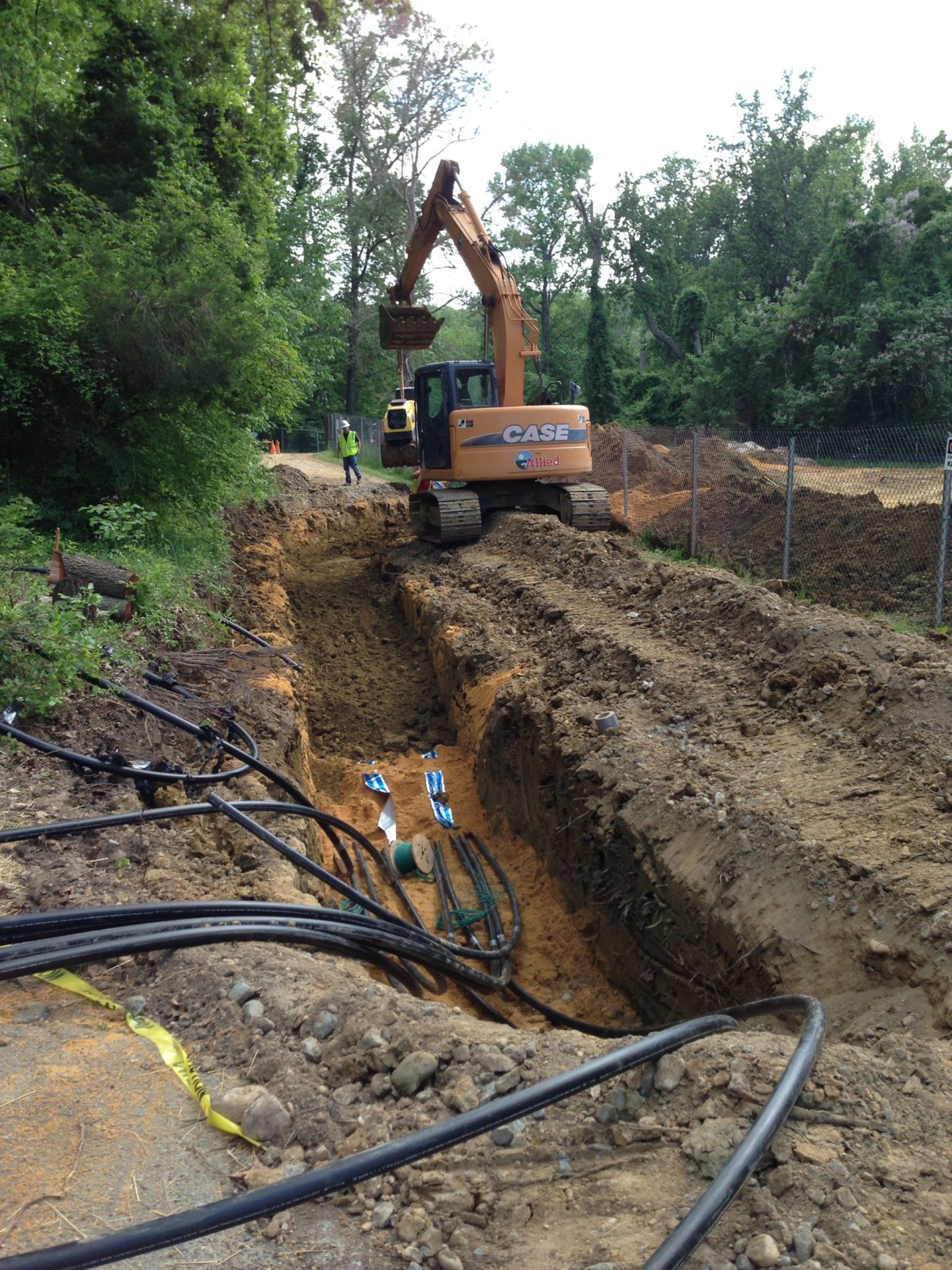By Karen Miles, Land Use/Facilities Manager
 For anyone not familiar with construction projects, the work going on in preparation for Phase One of the Potomac Watershed Study Center (PWSC) is mind boggling. When we go into any private or commercial building that is already built, all of the ‘invisible’ parts are taken for granted. These include all of the various underground pipes that carry drinking water, septic, electric lines, fire protection water lines, communications lines, storm water culverts and more.
For anyone not familiar with construction projects, the work going on in preparation for Phase One of the Potomac Watershed Study Center (PWSC) is mind boggling. When we go into any private or commercial building that is already built, all of the ‘invisible’ parts are taken for granted. These include all of the various underground pipes that carry drinking water, septic, electric lines, fire protection water lines, communications lines, storm water culverts and more.
I have never seen so many trenches and holes dug in such a small space! Not only are these underground lines necessary to any project, but these particular ones are different than nearly all that have been laid in the past. They are all a part of our Living Buildings Project that has the potential to actually improve the quality of the environment. If you are reading this blog post, you probably have read about our PWSC project on the Alice Ferguson Foundation’s Website, so I won’t go into more detail.
The products that are used in an endeavor such as this must meet stringent guidelines and each item and its parts, plus the manufacturing process toxic impact, must be submitted to the International Living Futures Institute (ILFI) for approval prior to using it. This process is new to most architects, engineers, contractors and sub-contractors and government entities, so it can be tedious. As with any new and revolutionary concept, those who sign on in the beginning have to lay the groundwork for all those following in their footsteps.
Many of the building products contain toxins and/or were manufactured thousands of miles from the work site. Man’s footprint on the environment can be reduced drastically by using non-toxic materials that are manufactured within a tight radius of each project. Even the road building aggregates must be tested for conformance to this strict set of standards. The normally used piping that carries water from a water storage tank to the buildings in case of a fire contains ‘red-listed’ chemicals, so an alternative had to be found. High density polyethylene (HDPE) pipes replace the common poly-vinyl chloride (PVC) or metal lines. These pipe sections must be fused with a special piece of equipment that requires training prior to using it. Even the valves that are placed in the lines and things like screws in equipment must be submitted and approved. The concrete recipe that is commonly used for footings and walls contains a very small amount of formaldehyde which aids the curing process. Our concrete subcontractor has agreed to change to chemical content of the pour to conform to the ILFI standards.
This way of doing things is totally new to almost everyone now involved in our project, but as is with most new innovations or standards, will soon become the norm. We hope to be THE PROJECT in the DC metropolitan area and beyond that showcases what can be done when people aim for the moon and actually land on it, metaphorically!
